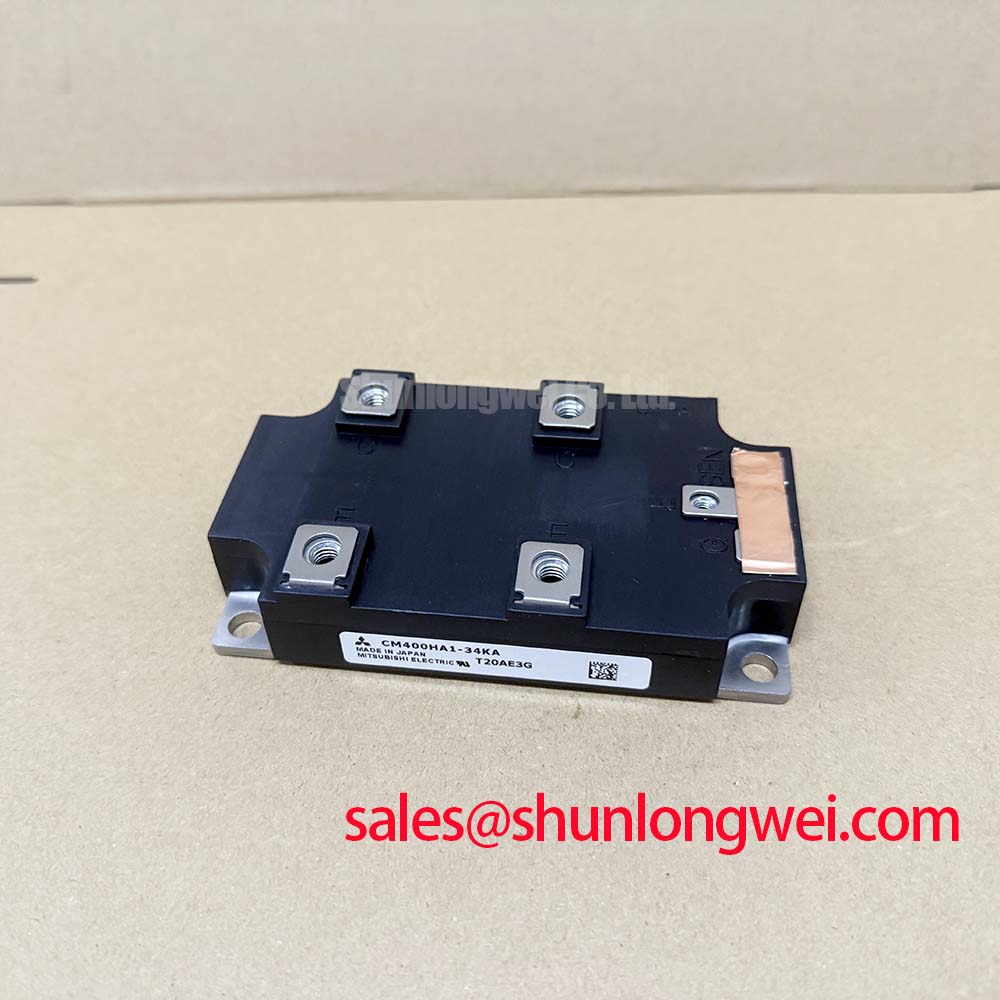Content last revised on November 21, 2025
CM150DY-24NF: 1200V / 150A Dual IGBT Module
An Engineer's Overview of the CM150DY-24NF
Distilling Specs for High-Efficiency Power Conversion
The Mitsubishi CM150DY-24NF is an NF-Series dual IGBT module engineered for demanding high-power switching applications, delivering a robust balance of conduction and switching performance. It integrates two IGBTs in a half-bridge configuration, rated for 1200V and 150A. Key specifications include a collector-emitter saturation voltage (VCE(sat)) of 2.2V (typical) and a low thermal resistance (Rth(j-c)) of 0.16 °C/W per IGBT, establishing a strong foundation for thermal management. This module is designed to minimize overall system losses, directly addressing the need for higher efficiency in industrial power systems. For industrial motor drives requiring elevated current handling within a similar voltage class, the CM200DY-24NF offers an increased current rating of 200A.
Key Parameter Overview
Highlighting Critical Specifications for System Design
The specifications of the CM150DY-24NF are tailored for reliability and efficiency in industrial power conversion systems. The module's performance is defined by its electrical and thermal characteristics, which are crucial for design-in decisions.
| Parameter | Value | Conditions |
|---|---|---|
| Collector-Emitter Voltage (VCES) | 1200V | VGE = 0V |
| Collector Current (IC) | 150A | TC = 25°C |
| Collector-Emitter Saturation Voltage (VCE(sat)) | 2.2V (Typ.) / 2.7V (Max.) | IC = 150A, VGE = 15V, Tj = 25°C |
| Thermal Resistance (Rth(j-c)) | 0.16 °C/W (per IGBT) | IGBT Part |
| Isolation Voltage (Viso) | 2500Vrms | AC, 1 minute |
Download the CM150DY-24NF datasheet for detailed specifications and performance curves.
Application Scenarios & Value
System-Level Benefits in Industrial Motor Control
Best fit for medium-power industrial motor drives up to 75 kW, the CM150DY-24NF's low VCE(sat) directly translates to reduced conduction losses and lower operating temperatures. What is the primary benefit of its low saturation voltage? It significantly reduces the thermal load on the heatsink. In a Variable Frequency Drive (VFD) operating under high-load, cyclic conditions, this thermal efficiency is critical. The module’s 2.2V typical VCE(sat) means less power is wasted as heat during the on-state. This is analogous to using a thicker wire to carry electricity; less energy is lost to resistance. This characteristic allows engineers to either design a more compact cooling system, reducing cost and size, or operate at a higher power density, improving overall system performance and reliability. This module excels in applications such as general-purpose inverters and servo controls where efficiency and thermal stability are key design criteria.
Frequently Asked Questions (FAQ)
How does the VCE(sat) of 2.2V impact thermal design and heatsink selection?
A lower VCE(sat) directly reduces conduction power loss (P_loss = VCE(sat) * IC), which is the primary source of heat in an IGBT at high currents. This reduction in generated heat allows for the use of a smaller, more cost-effective heatsink or enables higher current operation within the same thermal envelope, thereby increasing the system's power density.
What is the significance of the dual-element (half-bridge) configuration?
The integrated half-bridge (2-in-1) design simplifies the layout of a standard 3-phase inverter, which requires three such modules. This reduces stray inductance between switches compared to using discrete components, which can help minimize voltage overshoots during fast switching and improve the overall reliability and electromagnetic compatibility (EMC) of the industrial inverter system.
For which switching frequencies is the CM150DY-24NF best suited?
While the datasheet provides switching characteristics (ton, toff, trr), NF-series modules are generally optimized for low to medium frequency applications, typically up to 20 kHz. They prioritize low conduction losses, making them ideal for motor drives and uninterruptible power supplies (UPS) where the switching frequency is a compromise between efficiency and acoustic noise.
Application Vignette
Enhancing Reliability in Conveyor System Drives
Consider the design of a motor drive for a large-scale industrial conveyor system, which frequently experiences high start-up torque and variable loads. A key engineering challenge is ensuring long-term reliability without over-specifying the thermal management system. The CM150DY-24NF provides a direct solution through its optimized thermal resistance (Rth(j-c)) of 0.16 °C/W. This low thermal resistance acts like a wide-open pipe for heat, allowing it to move efficiently from the IGBT chip to the heatsink. In practice, this means that during a current surge when the motor starts, the junction temperature rises more slowly and peaks at a lower level. This prevents the device from hitting its thermal limit, thereby improving its SOA (Safe Operating Area) margin and significantly enhancing the drive's operational lifetime under stressful, real-world conditions.
Strategic Implications for System Design
Integrating the CM150DY-24NF offers a direct path to designing more efficient and thermally robust power conversion systems. Its datasheet-verified parameters for low conduction losses and effective heat dissipation provide engineers with a reliable component for building systems that meet modern energy efficiency standards. The module's standard industrial footprint further simplifies manufacturing and integration, making it a sound choice for both new designs and upgrades of existing platforms in the industrial automation and power control sectors.















